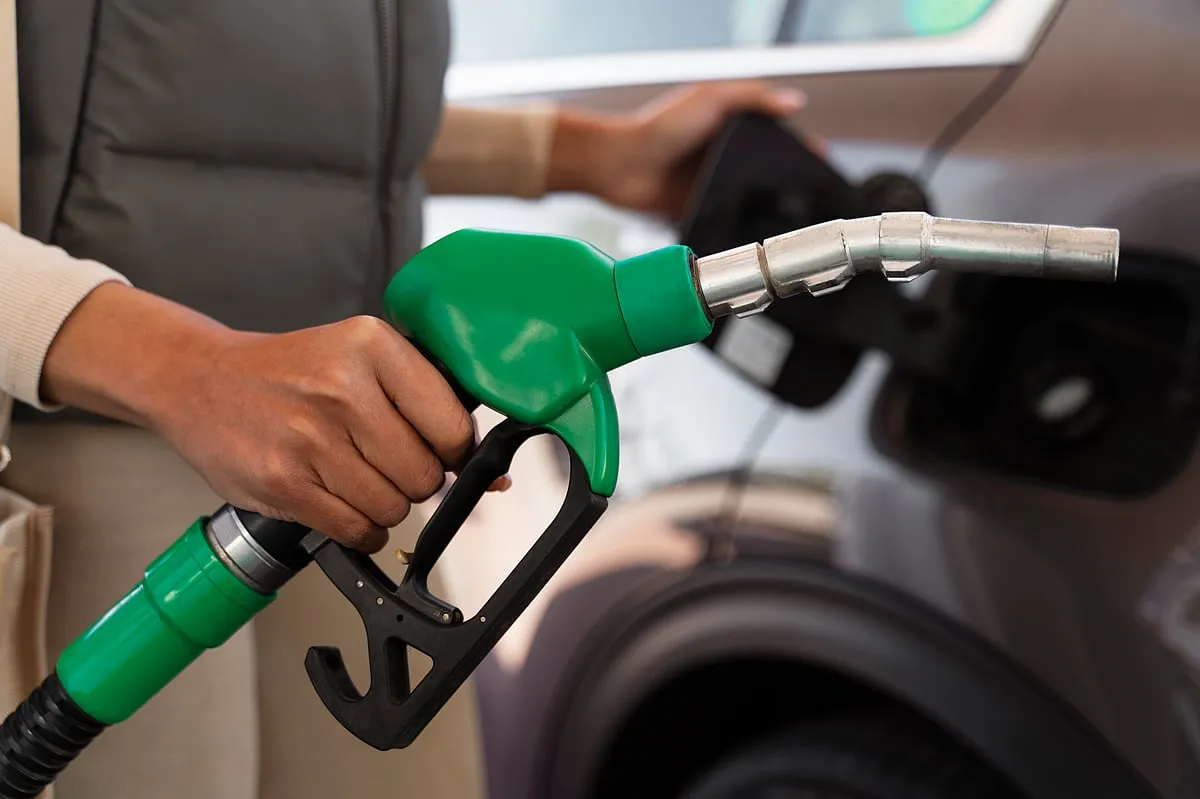
Petrol Diesel Price Update India Today November 7 Rates
Petrol & Diesel Price Update Across India – Today’s Latest Rates
As of November 7, 2025, the petrol price today and diesel rate in India remain stable across major cities, offering a brief respite for commuters and fleet operators amid fluctuating global crude oil dynamics. In New Delhi, petrol stands at ₹94.77 per litre, while diesel is priced at ₹87.67 per litre, unchanged from the previous day. Mumbai sees petrol at ₹103.50 and diesel at ₹90.03, reflecting state-specific taxes that vary widely. This fuel price update India highlights no revisions by oil marketing companies like IOCL, BPCL, and HPCL, as international benchmarks hold steady. Bangalore's petrol rate holds at ₹102.55, with diesel at ₹90.65, impacting daily travel costs for millions. Chennai commuters pay ₹100.80 for petrol and ₹92.39 for diesel, underscoring the Northeast Monsoon's indirect influence on logistics expenses. These rates, revised daily at 6 AM, emphasize the importance of checking local petrol diesel price today for budgeting.
Hyderabad's higher rates of ₹107.46 for petrol and ₹95.70 for diesel stem from elevated VAT, a common thread in southern states. Ahmedabad offers relatively lower petrol at ₹94.63 and diesel at ₹90.30, benefiting Gujarat's industrial hubs. Kolkata's figures are ₹105.41 for petrol and ₹92.02 for diesel, while Pune lists ₹104.04 and ₹90.57 respectively. This consistency in today's petrol diesel price across the nation aids in planning, yet experts warn of potential hikes if Brent crude surpasses $80 per barrel. Lucknow and Jaipur report petrol at ₹94.69 and ₹104.41, with diesel at ₹87.81 and ₹89.93, showcasing northern affordability. Gurgaon and Noida, key NCR spots, have petrol at ₹95.84 and ₹94.87, diesel ₹88.29 and ₹88.01. The absence of changes fosters economic predictability, crucial for India's transport-dependent economy.
Nationwide, fuel prices are influenced by a cocktail of factors including import duties, rupee-dollar exchange rates, and dealer commissions, with no alterations signaling market equilibrium. For two-wheelers and cars, these rates translate to marginal savings on fill-ups, but heavy vehicle operators in logistics chains still grapple with thin margins. The government's dynamic pricing mechanism, in place since 2017, ensures transparency, yet calls for reductions in central excise persist amid inflation concerns.

City-Wise Petrol and Diesel Rates on November 7, 2025
Diving into the specifics of this petrol price update, New Delhi maintains its position as one of the more affordable metros, with petrol at ₹94.77 enabling cost-effective commutes for government employees and residents alike. Diesel at ₹87.67 supports efficient public transport like DTC buses, reducing operational costs by a fraction. In contrast, Mumbai's bustling streets demand ₹103.50 for petrol, a premium driven by Maharashtra's 25% VAT, affecting cab drivers who cover thousands of kilometers daily. Diesel here at ₹90.03 keeps BEST buses running smoothly, though truckers on NH48 highways feel the pinch during peak hours.
Bangalore, the Silicon Valley of India, sees petrol at ₹102.55, impacting IT professionals' fuel budgets for weekend getaways to Coorg. Diesel rates of ₹90.65 aid in logistics for e-commerce giants like Flipkart, ensuring timely deliveries amid traffic snarls. Chennai's automotive hub pays ₹100.80 for petrol, with diesel at ₹92.39 fueling the fishing fleets along Marina Beach and industrial units in Sriperumbudur. Hyderabad's tech corridor endures the highest petrol at ₹107.46, a 13% jump over Delhi, while diesel ₹95.70 powers the burgeoning pharma sector's transport needs.
Further afield, Ahmedabad's ₹94.63 petrol and ₹90.30 diesel rates bolster Gujarat's diamond trade logistics, with lower costs translating to competitive exports. Kolkata's ₹105.41 petrol reflects West Bengal's tax structure, affecting Howrah Bridge traffic, while ₹92.02 diesel supports jute mills' machinery hauls. Pune's ₹104.04 petrol and ₹90.57 diesel cater to the auto manufacturing belt, where Tata and Bajaj factories optimize fleet efficiencies. Jaipur's ₹104.41 petrol draws tourists to fuel rentals, with ₹89.93 diesel aiding Rajasthan's mining transports.
Lucknow's ₹94.69 petrol and ₹87.81 diesel offer Uttar Pradesh relief, facilitating agricultural produce movements to mandis. Gurgaon's corporate shuttles run on ₹95.84 petrol, diesel ₹88.29 keeping construction cranes mobile in the millennial city. Noida's ₹94.87 petrol and ₹88.01 diesel mirror Delhi's trends, benefiting the electronics manufacturing cluster. These variations underscore state autonomy in taxation, with southern cities often bearing higher burdens due to revenue needs.
Factors Influencing Today's Fuel Prices in India
The stability in diesel price today owes much to Brent crude hovering around $78 per barrel, a moderation from October's volatility triggered by Middle East tensions. India's 85% import dependency means every $10 rise adds ₹7-8 to retail prices, yet hedging strategies by OMCs have cushioned blows. The rupee's resilience at 83.5 to the dollar further stabilizes costs, avoiding the sharp escalations seen in 2022 when it breached 80.
Central excise duty, fixed at ₹19.98 for petrol and ₹15.83 for diesel since May 2022 cuts, contrasts with states' VAT hikes—Karnataka's 29% on petrol exemplifies this. Dealer commissions, a modest ₹2.58 per litre, ensure last-mile viability. Environmental cesses in metros like Delhi add another layer, pushing prices upward by 5-10%. Geopolitical calm in OPEC+ circles, with no production surprises, sustains this equilibrium, though analysts eye US elections' ripple effects on energy policies.
Domestic refining capacity at 250 MMTPA, led by Reliance Jamnagar, reduces import premiums, but pipeline constraints in the Northeast inflate local rates. Biofuel blending, now at 12% ethanol in petrol, trims import bills by ₹45,000 crore annually, indirectly benefiting consumers. As monsoon recedes, transportation efficiencies improve, potentially averting seasonal spikes.
- Brent crude stability at $78/bbl prevents knee-jerk hikes.
- Rupee at 83.5/USD buffers forex volatility.
- VAT variations: 25% in Maharashtra vs. 19.4% in Delhi.
- Ethanol blending cuts costs by 2-3% on petrol.
- OMC hedging locks in supplies amid global flux.
Economic Impacts of Current Petrol and Diesel Rates
This fuel price update across India reverberates through the economy, where transport accounts for 14% of CPI inflation. Stable rates curb vegetable price surges in metros, as truckers from Nashik to Mumbai avoid pass-through costs. Aviation turbine fuel (ATF), linked to jet prices, holds steady, boosting IndiGo's margins on Delhi-Bangalore routes. MSMEs in Tirupur's textile belt benefit from diesel parity, maintaining export competitiveness to Europe.
Agriculture, consuming 20% of diesel, sees input costs steady for Punjab's harvesters, aiding rabi sowing. Fertilizer transport from Trombay to farms remains economical, preventing urea shortages. E-commerce logistics, with Amazon's fleets in Hyderabad, optimize routes sans fuel surcharges, enhancing last-mile deliveries. Tourism rebounds in Jaipur, where lower effective costs per km lure more road trippers from Delhi.
However, high petrol in Bangalore strains gig workers on Swiggy, prompting hybrid vehicle shifts. Nationally, a 1% fuel price drop could shave 0.2% off GDP via multiplier effects, per RBI models. With IIP growth at 5.8%, stable fuels underpin manufacturing revival in Pune's auto ancillary units.
Long-term, electric vehicle adoption accelerates—Delhi's EV sales up 40%—as parity with ICE running costs narrows. CNG at ₹76 in Noida offers alternatives, though infrastructure lags in Chennai.
Consumer Tips for Managing Fuel Expenses
Navigating petrol diesel rates today, savvy users track apps like MyPetrolPump for hyper-local updates, avoiding outdated pumps. Carpooling via BlaBlaCar slashes Mumbai commutes by 50%, while tire pressure checks yield 5% savings. Hybrid incentives under FAME-II rebate up to ₹1.5 lakh, ideal for Lucknow buyers eyeing Toyota Innova.
Fuel cards from HDFC offer 1-2% cashback, stacking with loyalty points at BPCL outlets. Route optimization via Google Maps cuts idling in Kolkata traffic, conserving diesel for long-haul. Maintenance schedules prevent 10% efficiency losses, per ARAI tests. For fleets, telematics in Gurgaon logistics firms monitor usage, trimming bills by 15%.
Shifting to EVs? Delhi's 1,000+ charging stations make it viable, with TATA Nexon at ₹12/km vs. petrol's ₹6 but dropping with battery tech. Bulk buying for generators in Ahmedabad avoids peak-hour premiums.
- Monitor daily via SMS alerts from IOCL.
- Adopt eco-driving: Accelerate gently for 10% savings.
- Choose CNG in NCR for 30% cheaper runs.
- Service AC filters to avoid drag.
- Explore biofuels in Kerala pumps.
Historically, November rates dip post-monsoon, as seen in 2023's ₹2 cut, hinting at festive relief. Yet, 2024's OPEC cuts spiked prices 8%, underscoring vigilance. With no revisions today, households allocate more to essentials, bolstering Diwali spends.
Future Outlook and Policy Recommendations
Looking ahead, India fuel prices may ease if US shale output ramps, per IEA forecasts, potentially trimming ₹1-2 by December. Domestic green hydrogen pilots in Pune could disrupt diesel dominance by 2030, targeting 5 million tonnes. Policy-wise, uniform VAT caps at 20% could save ₹50,000 crore yearly, per CII estimates.
Subsidies for EVs in tier-2 cities like Jaipur would accelerate adoption, reducing urban pollution. OMCs' digital platforms enhance transparency, with QR codes at pumps linking to rate histories. Climate commitments under COP29 may incentivize biofuels, lowering import reliance to 70% by 2027.
In Chennai's auto ecosystem, R&D into efficient engines promises 20% better mileage, countering rate hikes. Northern grids' solar integration cuts diesel genset use in Lucknow blackouts. Overall, balanced fiscal measures ensure affordability, fostering inclusive growth.
Expanding on regional stories, Mumbai's dabbawalas cycle 40 km daily, immune to petrol swings, inspiring urban mobility models. Hyderabad's startup fleets go electric, slashing costs 60%. Kolkata's tram revival eases diesel dependency on vintage lines. These innovations, coupled with stable rates, paint an optimistic canvas for sustainable transport.
From Ahmedabad's port efficiencies to Bangalore's drone deliveries bypassing roads, tech mitigates fuel woes. Policymakers eye windfall taxes on OMCs during lows, recycling to public welfare. As November unfolds, unchanged petrol price in India empowers planning, from family road trips to corporate expansions.
In essence, today's update reflects resilience amid global uncertainties, urging consumers to adapt proactively. With tools at hand, every litre counts toward fiscal prudence and environmental stewardship.
Comment / Reply From
You May Also Like
Popular Posts
Newsletter
Subscribe to our mailing list to get the new updates!





